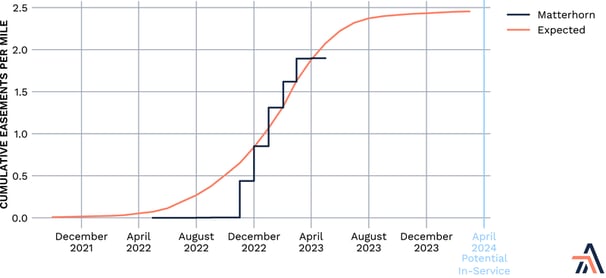The Haynesville Basin: Growing Interest and Growing Capacity
Originally published for customers May 24, 2023
What’s the issue?
The Haynesville project buildout is underway, similar to the Permian buildout a few years ago but with far less systematized data.
Why does it matter?
Competitive intelligence in the region is critical to understanding market fundamentals, project timing, and project opportunities. Due to unstandardized reporting requirements and enforcement, there is limited and hard to capture publicly available data at the state level.
What’s our view?
The Arbo team is providing cutting edge competitive intelligence to our customers tracking Haynesville projects in a technologically forward way. By relying heavily on our data acquisition system overlaid with our subject matter experts, there is no better source for reliable, timely Haynesville project information.
The Gulf Coast has been a fixation of project developers over the last several years as companies seek to export natural gas through the construction of LNG terminals. As such, there has been a similar fixation on supplying gas to the terminals or feeder pipelines in the region. Much like the most recent Permian buildout a few years ago, there has been growing activity and attention to the announcement of new projects, and sensitivity to the timing of the projects’ in-service dates and available capacity.
One of Arbo’s core capabilities is forecasting a project’s schedule with the ability to compile information from publicly available data sources to track project milestones. For the current Haynesville buildout, Arbo compiles all available information for gas pipeline inter and intrastate projects to track the progress of such projects in a structured format to be delivered to our customers upon request. For customers who are interested in more frequent updates, Arbo provides additional updates as it becomes aware of developments that may have a material impact on the timing of Arbo’s projected in-service dates.
Haynesville Project Overview
Currently, there are 11 projects in various development stages in the Haynesville region, amounting to over 14 Bcf/d of capacity slated to come online, with most of that capacity online by the end of 2024. The list below shows a sample of some of the characteristics Arbo is tracking on a daily basis to inform our customers of project updates:
- Project
- Developer
- Area (Basin/markets served)
- FERC docket number (if applicable)
- Route (including counties if known)
- Mileage
- Diameter
- Counties Crossed
- New Capacity
- Developer announced in-service Date
- Arbo projected in-service date
- ArboIQ Project Summary
- Property Records Status
- Water Permit Status
- Air Permit Status
- FID Reached (Yes/ No)
- Construction Status
Much like Arbo’s Permian Edge tool during the Permian buildout, Arbo is able to use unique methodologies to capture this data and forecast in-service dates. For example, during the Permian buildout Arbo used county level land acquisition records to use easements as a proxy for the timing of construction and, ultimately, in-service dates. Using Matterhorn Express Pipeline, a Permian project that has reached FID and began serious land acquisition in November of 2022, as an example, Arbo is able to forecast in-service dates based on historical land acquisition data for past projects. Arbo is able to use this methodology across basins, with a focus more recently on the Haynesville, providing customers with similar property acquisition data and visuals to the one below for Matterhorn:

A Deeper Dive Into the Arbo Methodology
Arbo’s data acquisition system allows for the rapid extraction and systemization of a myriad of data sets, allowing Arbo’s subject matter experts to compile key project information for Haynesville projects. Due to unstandardized reporting requirements and enforcement, there is limited publicly available data at the state level. The Arbo team has worked diligently to cultivate and refine a methodology to systemize as much publicly available federal and state level project data as possible in order to have the most up to date and accurate project information. On a daily basis, Arbo is able to source data from a number of sources. The table below provides a glimpse into the data used, and a brief explanation of its purpose in tracking and forecasting these projects:
| Data Source | Purpose |
|---|---|
| FERC eLibrary | Rapidly identify new projects, as well as updates to existing projects |
| Custom Alerting | Identify any events, news, or progress on Haynesville related projects |
| SEC Filings | Identify any statements made in SEC filings related to project progress |
| Condemnation Actions | Track and monitor project and construction progress through public Louisiana condemnation actions to forecast in service |
| Hydrostatic Test Records | Track and monitor construction progress through project Hydrostatic Test Records to forecast in service |
| Louisiana Department of Environmental Quality (LDEQ) | Track and monitor construction progress from project water quality and air permits to forecast in service |
| Louisiana Land Acquisition Records | Track and monitor project and construction progress through land acquisition to forecast in service |
| Louisiana Department of Natural Resources | New project identification and project progress updates |
| Louisiana Public Notice | New project identification and project progress updates |
As the Haynesville buildout continues, Arbo will continue to track these projects on an ongoing basis to provide critical competitive intelligence to our customers to help inform key decisions impacting tactical and strategic business decisions.